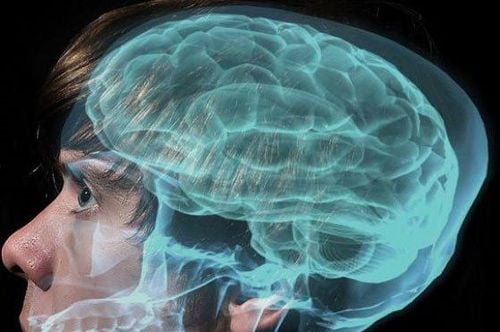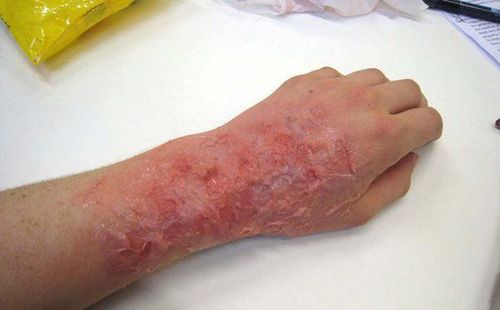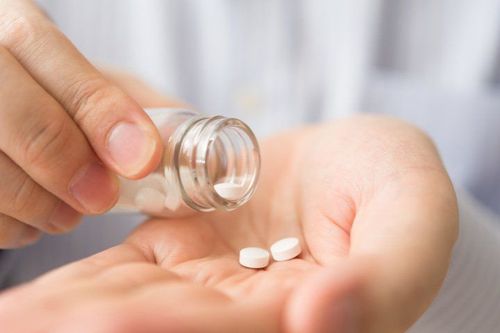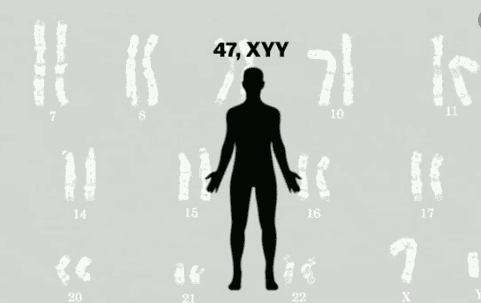This is an automatically translated article.
Duchenne muscular dystrophy is a genetic disorder on the X chromosome, so Duchenne muscular dystrophy affects mainly males. Females can receive the Duchenne muscular dystrophy gene but not show the disease.1. About Duchenne muscular dystrophy
Duchenne muscular dystrophy is a disease caused by mutations in the Dystrophin gene - a recessive gene located on the short arm of the X chromosome (Xq21), causing a deficiency of the Dystrophin protein located on the surface of the skeletal muscle cell membrane, leading to muscle degeneration. and muscle atrophy. Duchenne muscular dystrophy affects about 1 in 3500 boys born (about 20,000 new cases each year).The disease is inherited by a recessive gene located on the X chromosome. Female carriers of the gene often do not show the disease, but have a 50% chance of passing this mutated gene to a son or daughter. Rarely, a girl may present with the disease because the girl has only one X chromosome (Turner 45X syndrome) or due to inactivation of the remaining normal X chromosome in the XX pair. In 46XY males, there is only one X chromosome, so if the X chromosome carries the mutated gene, the male will manifest the disease. Most cases of son disease are caused by inheriting the X chromosome carrying the mutated gene from the mother.
Patients often have myasthenia gravis, appearing as early as 2-3 years old, progressing rapidly, starting with microscopic changes in the muscles, disproportionate muscles on both sides, gradually weakening muscle strength, and finally flaccid paralysis. and fibromyalgia, loss of the ability to walk, and death in their 20s from myocardial damage and respiratory disturbances. An active prevention method is prenatal diagnosis for couples who have had a child with the disease or have a family member with the disease.
2. Features of Duchenne's muscular dystrophy
Hereditary. All symptoms are caused by muscle weakness, without neurological or sensory disturbances. Progressive progression, progressive and irreversible muscle degeneration. Symptoms are localized mainly in skeletal muscle, but occasionally smooth muscle and cardiac muscle may also be involved.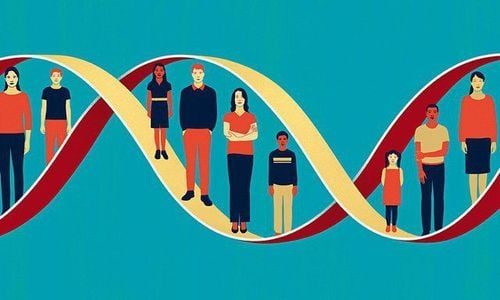
Bệnh loạn dưỡng cơ Duchenne có tính di truyền
3. Who should be tested for Duchenne muscular dystrophy?
Subjects who need to be tested for Duchenne muscular dystrophy gene to find the disease-causing mutation are:People suspected of having Duchenne disease. Couples who have had sick children. Families with sick relatives.
4. Diagnosis of Duchenne muscular dystrophy by genetic testing
The diagnosis of Duchenne muscular dystrophy is usually based on the progression of symptoms during the primary school years. Parents or teachers begin to notice that boys have difficulty climbing floors or catching up with other children.Several methods of diagnosing muscular dystrophy include:
Serum creatine kynase (CK) spikes 20 to 100 times, This test shows muscle damage is happening but is not a definitive diagnosis . Gene testing that checks for the presence of a disease-causing gene is the best way to make a diagnosis. Once a child is diagnosed with the disease, other family members should also be tested to see who carries the disease gene. Electromyography: There is damage of muscle fiber origin. Muscle biopsies: Muscle cells degenerate, shrink, connective tissue around muscle fibers proliferate. Immunofluorescence: Dystrophin protein was not detected at the muscle cell membrane surface. Molecular genetics: Using multiplex PCR to detect deletion mutations in 79 exons.
5. Treatment of Duchenne muscular dystrophy
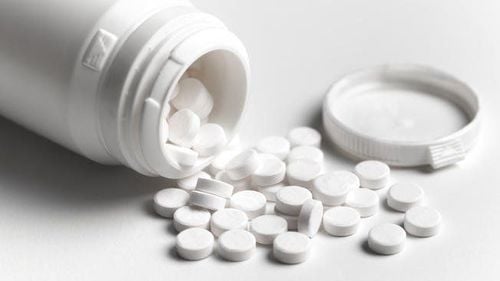
Có thể sử dụng thuốc để làm chậm sự mất cơ tuy nhiên thuốc cũng sẽ gây tác dụng phụ nếu sử dụng trong thời gian dài
Physical therapy and support are very helpful in maintaining flexibility and preventing muscle weakness. Physical activity such as swimming is good for boys with Duchenne muscular dystrophy. As the disease progresses, boys will need assistive devices such as wheelchairs and crutches. Because of breathing problems, some children need a tracheostomy, while others need a ventilator. Even with the best medical care, boys with Duchenne's disease often do not survive the first 30 years due to heart damage and progressive breathing problems from the disease.
Please dial HOTLINE for more information or register for an appointment HERE. Download MyVinmec app to make appointments faster and to manage your bookings easily.




